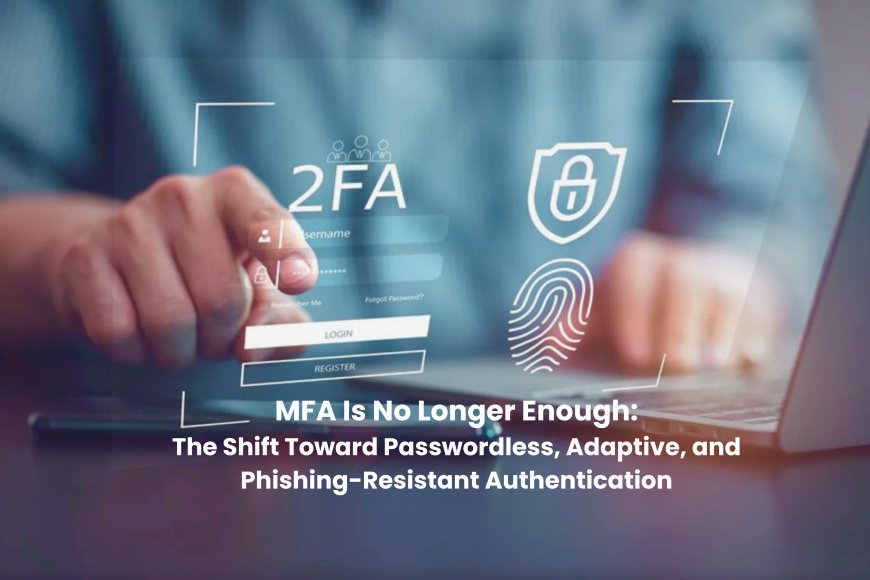MFA Is No Longer Enough: The Shift Toward Passwordless, Adaptive, and Phishing-Resistant Authentication
Traditional MFA is no longer enough. Future-ready authentication must be passwordless, phishing-resistant, user-friendly, and adaptive to evolving threats like AI-driven identity fraud.

For a long time, multi-factor authentication (MFA) has been the best way to keep our online identities safe. MFA added more security than just passwords by using one-time passwords (OTPs), push notifications, or hardware tokens. But things have changed, and not for the better.
Recent trends show that MFA isn't always 100% safe. Attackers have come up with new ways to sneak around these methods. Phishing, SIM-swapping, and man-in-the-middle attacks are some of the ways that hackers can now get users to give them access without them knowing it. People are even getting tricked into approving fake login requests through "MFA fatigue" attacks, which target push notifications.
Security keys and other hardware-based options offer better protection, but they can be hard to use. People lose them, support gets harder, and working remotely makes things even harder. Users of traditional systems also have to log in multiple times on different platforms, which slows down work and makes people angry.
At the same time, scammers are now using AI to make fake identities.This is very dangerous, especially when hiring and onboarding, because it's hard to tell if the person behind the screen is really who they say they are.
The future is in authentication that doesn't require passwords and is safe from phishing. FIDO2 and WebAuthn are two new standards that use cryptographic keys that stay on your device and can't be stolen. Blockchain-based credentials and digital identity wallets give people more control over their own identities, which improves privacy and lowers data exposure.
Modern systems also put a lot of focus on adaptive and continuous authentication.This means checking behaviour, device information, and location in real time and changing security levels as needed. Biometric authentication with facial detection, like facial recognition that checks to see if you're really present, adds another level of security.
It's not just about better security when you switch from MFA to smarter, easier-to-use systems. It's also about building trust, making things easier, and staying one step ahead of digital threats.
This article is based on information from Tech News World







